
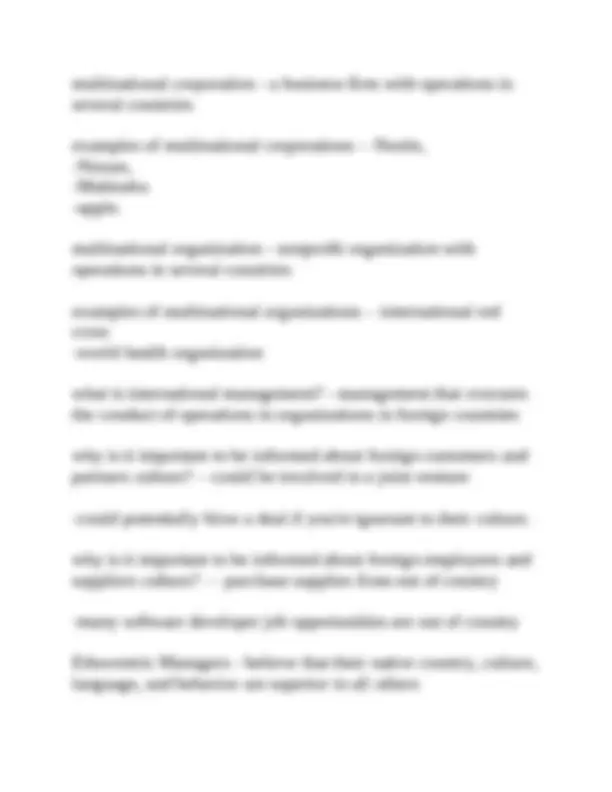
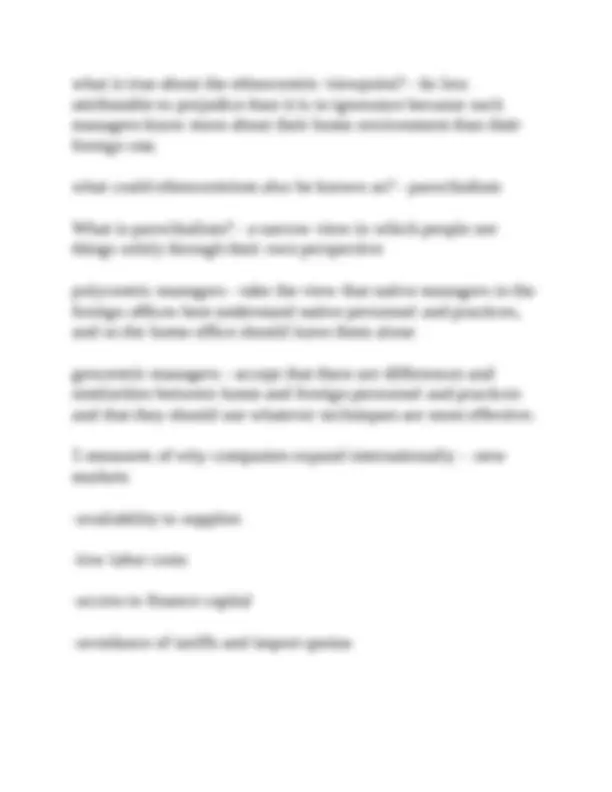
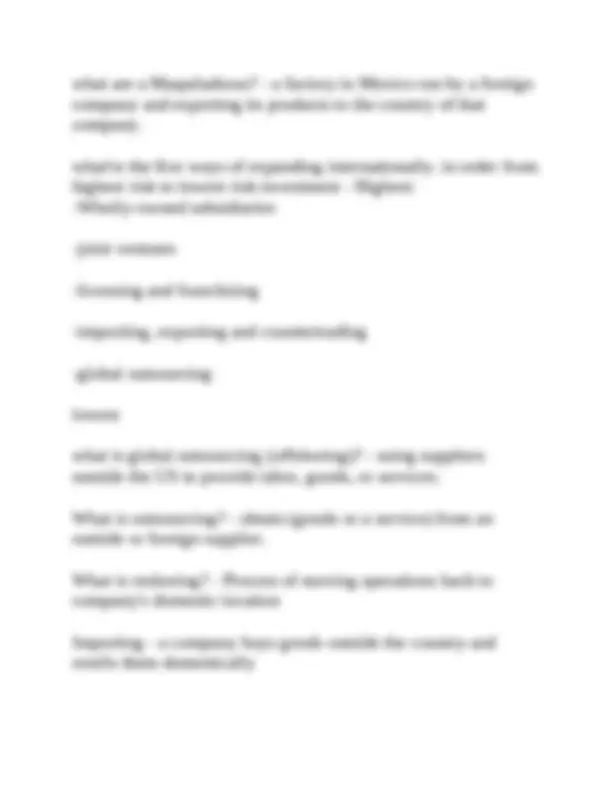
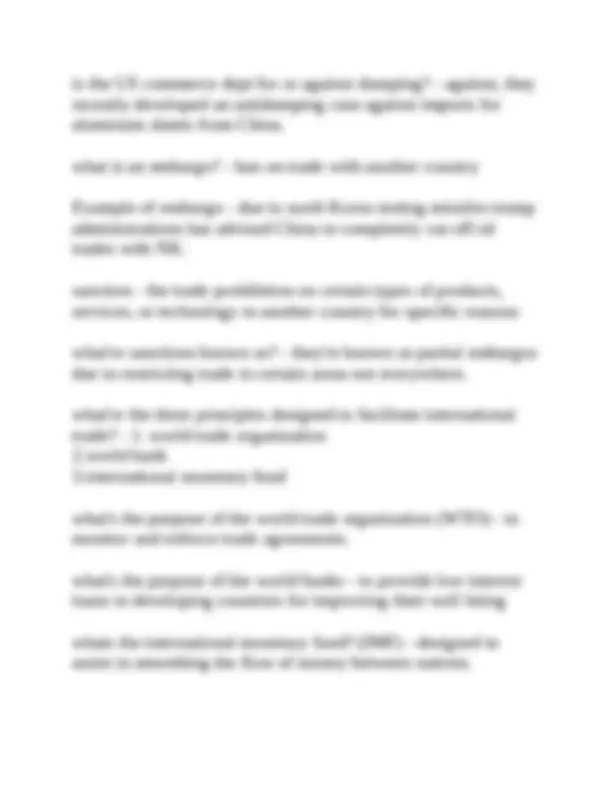
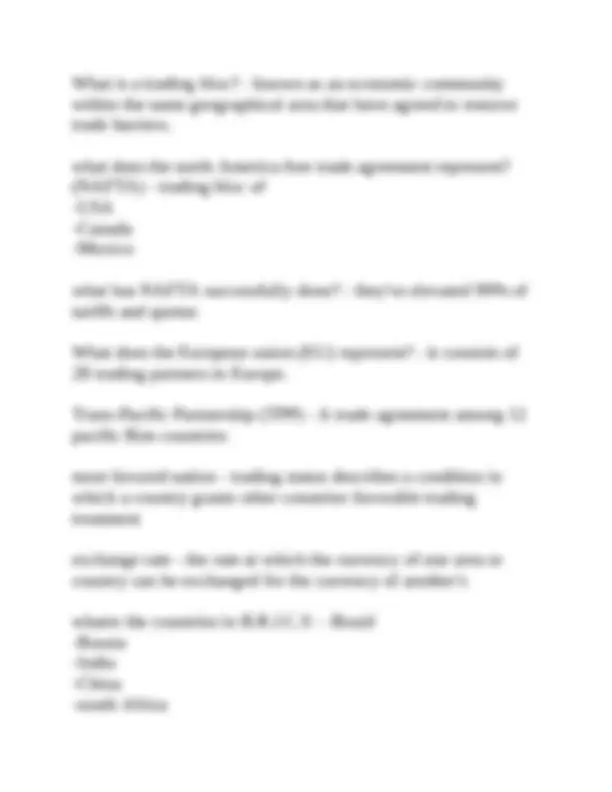
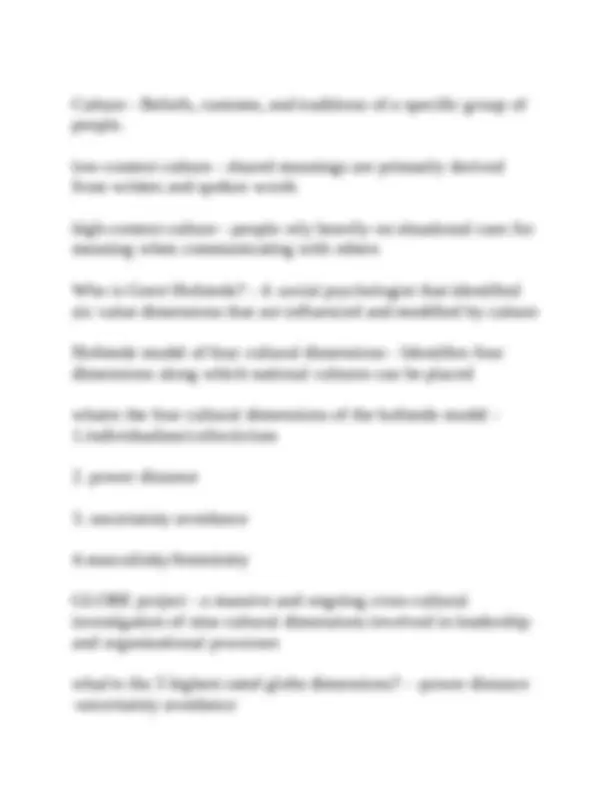
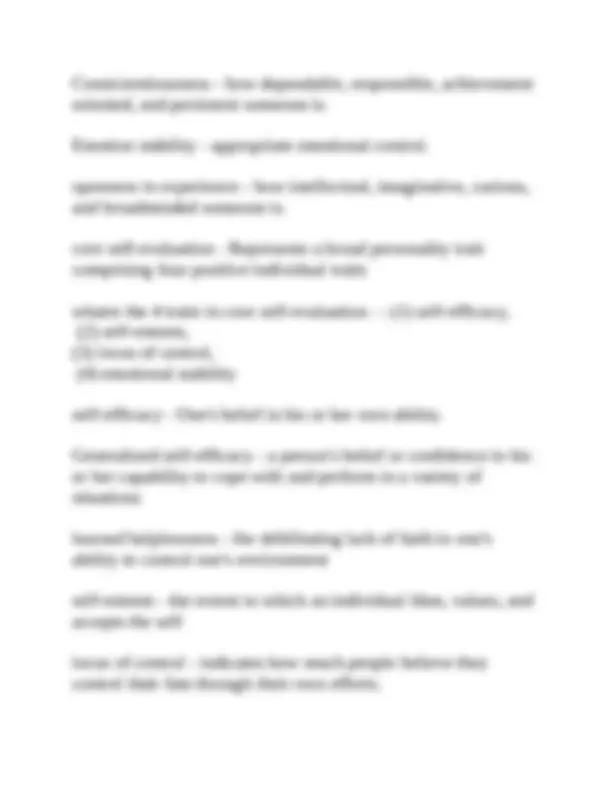
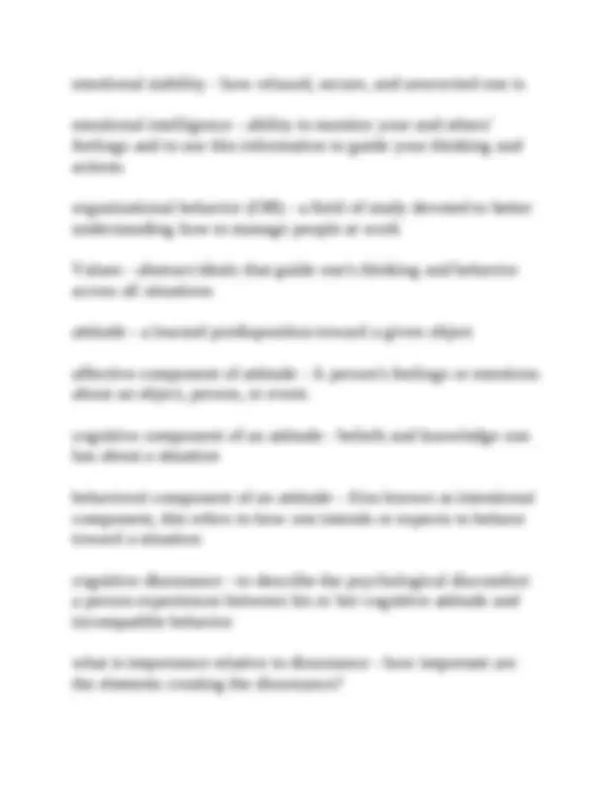
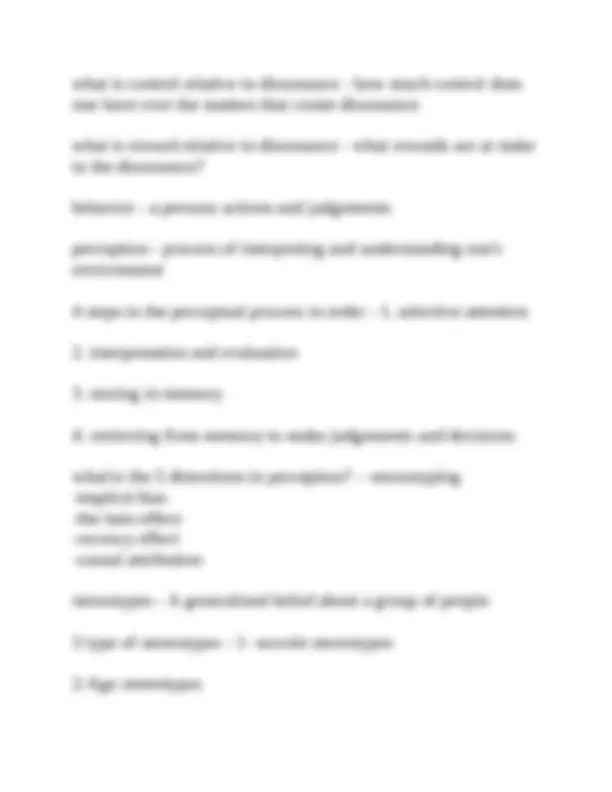
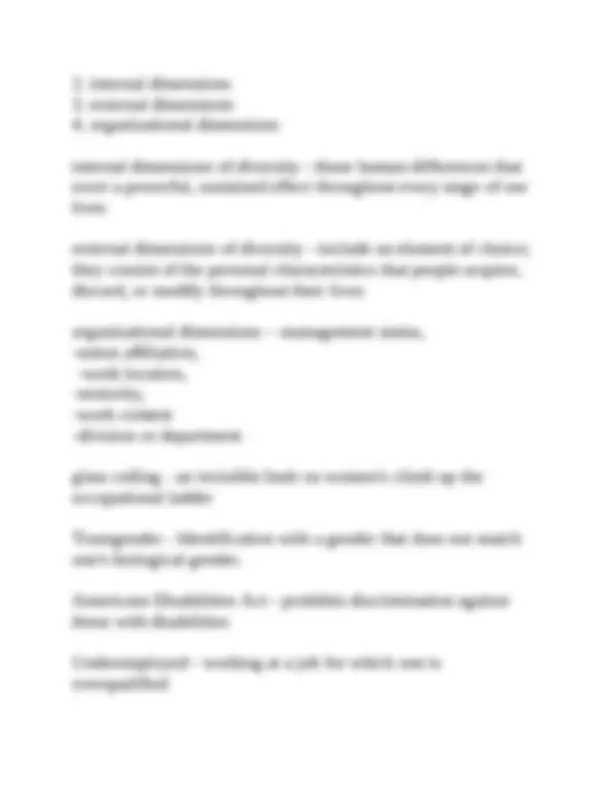


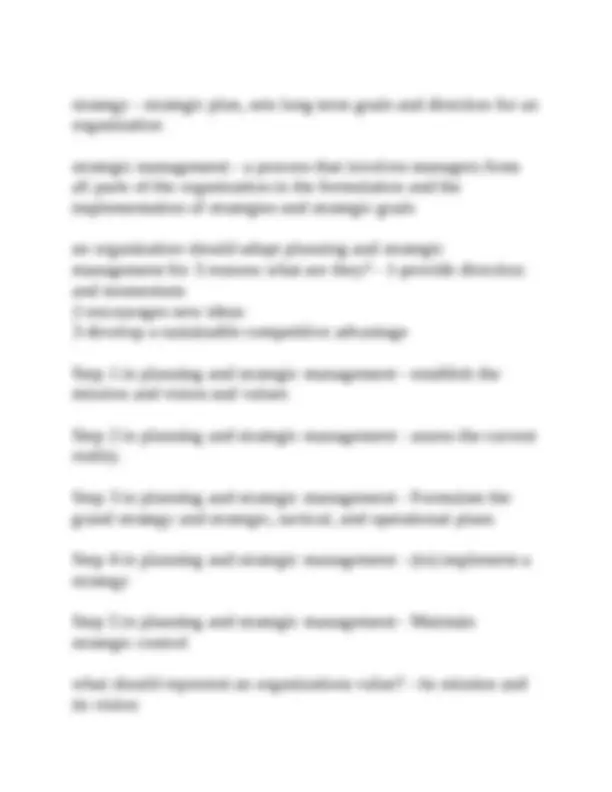
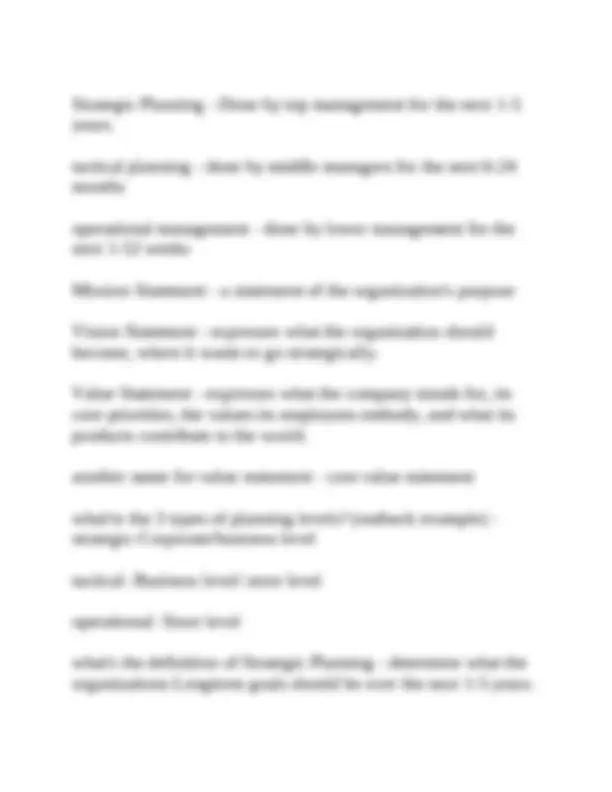
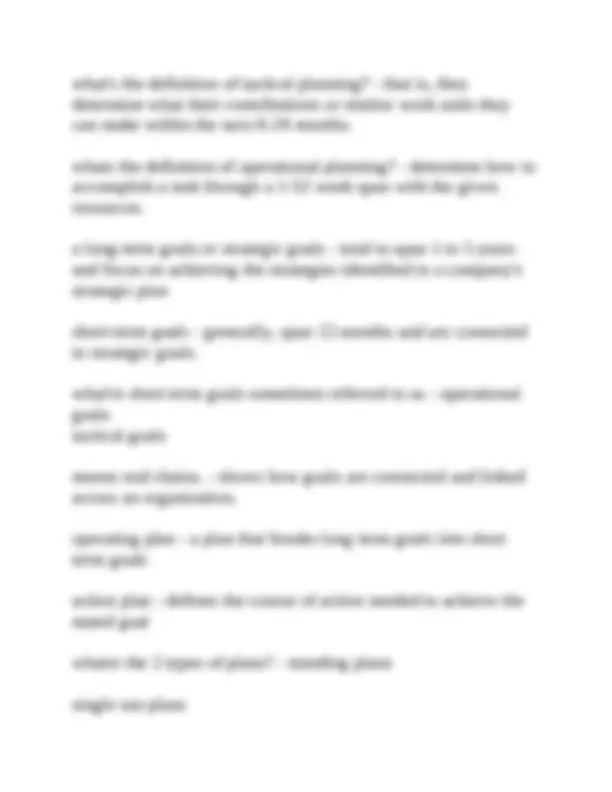
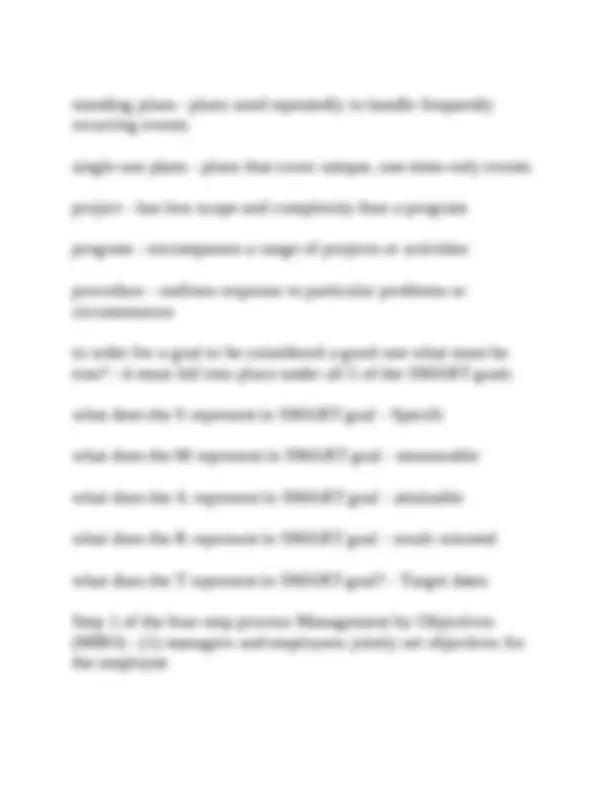
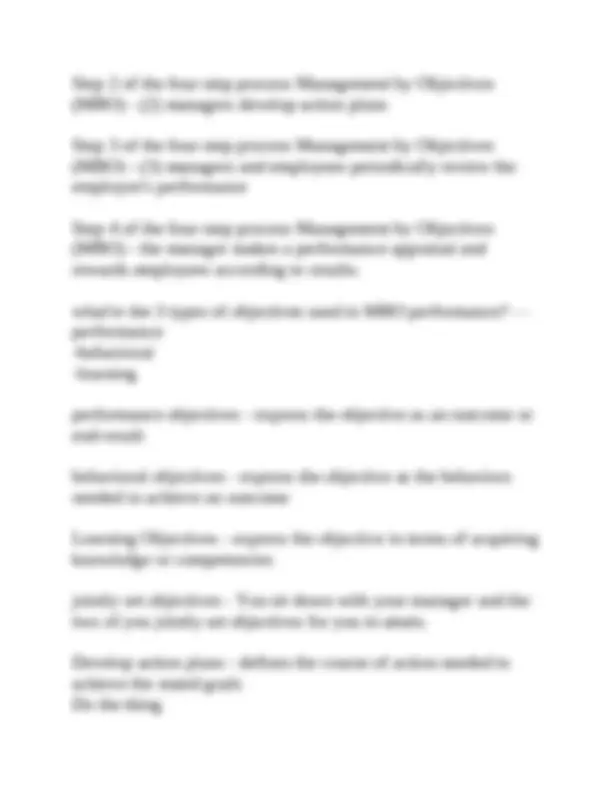
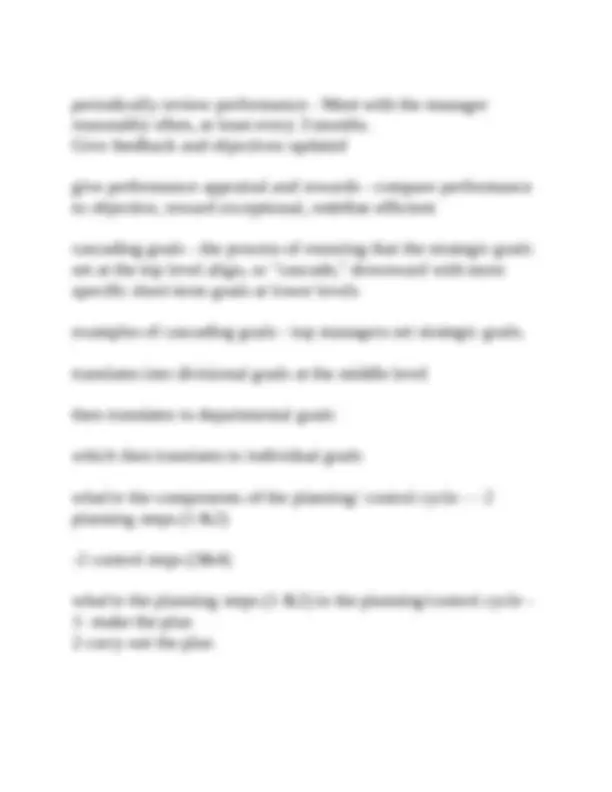
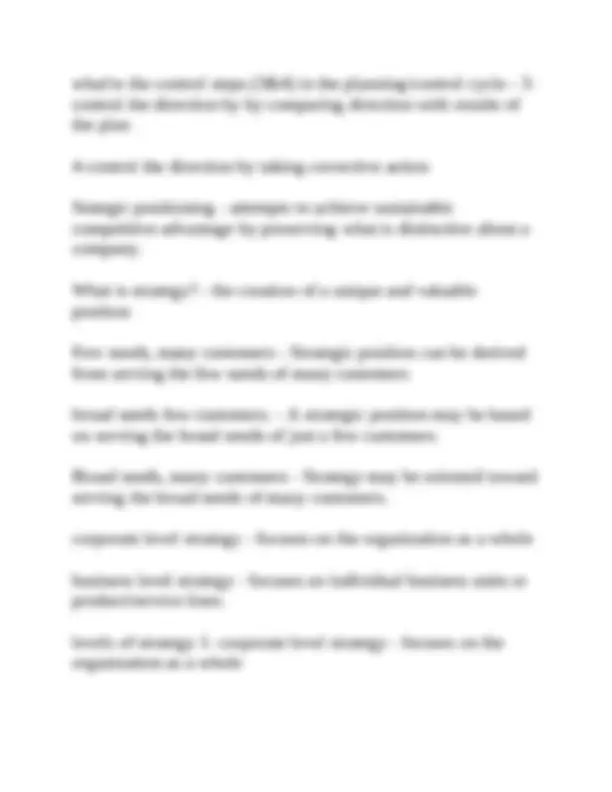
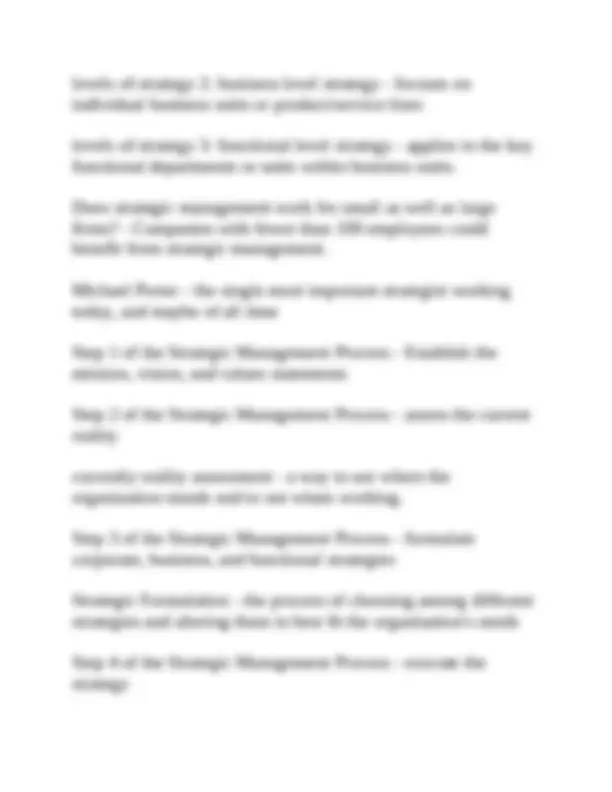
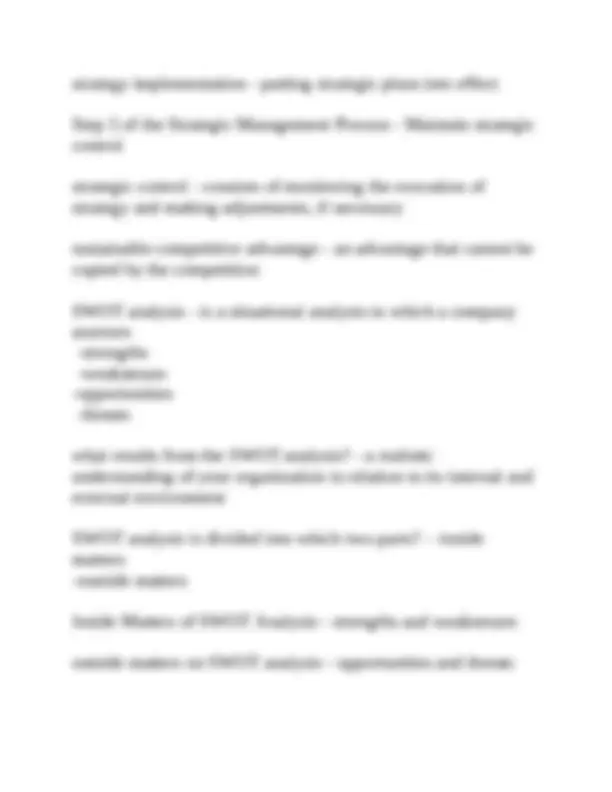
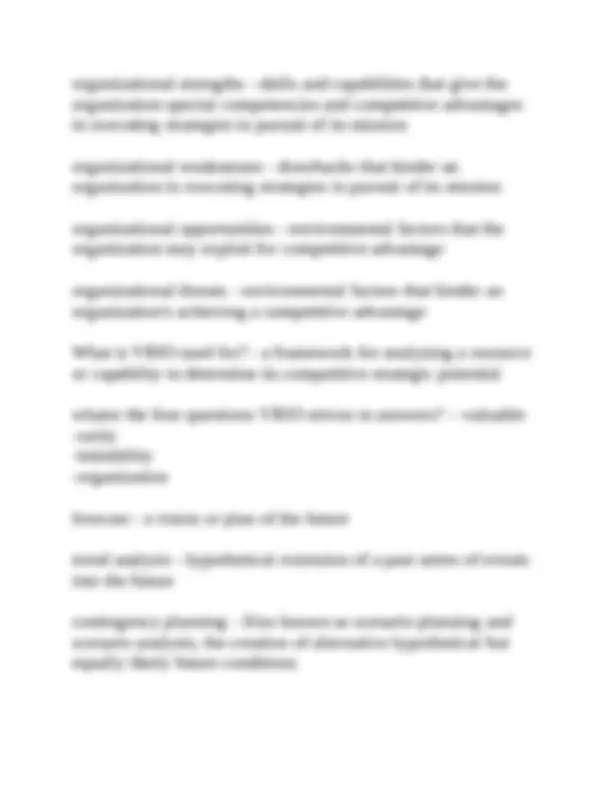
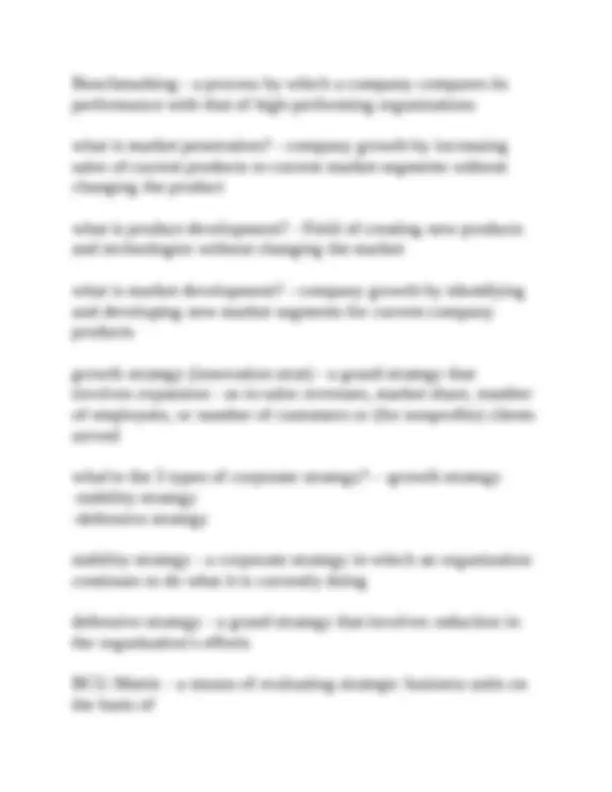
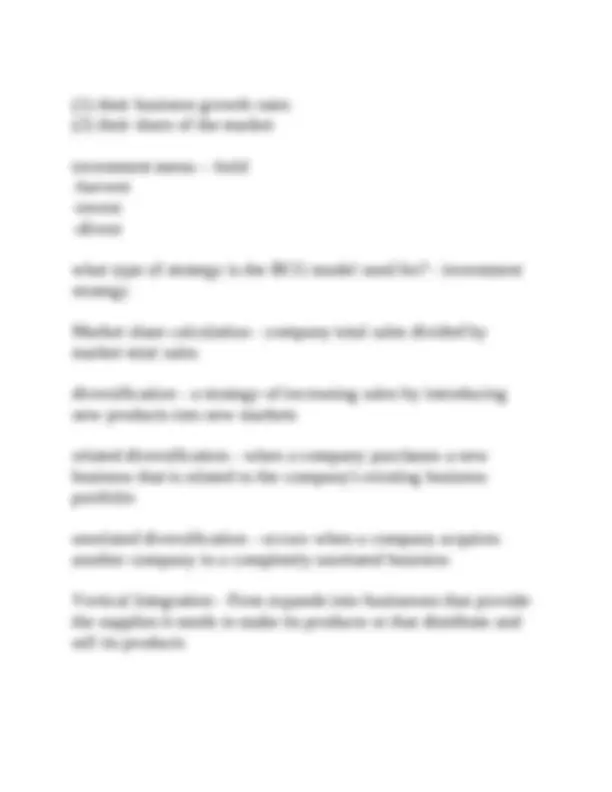
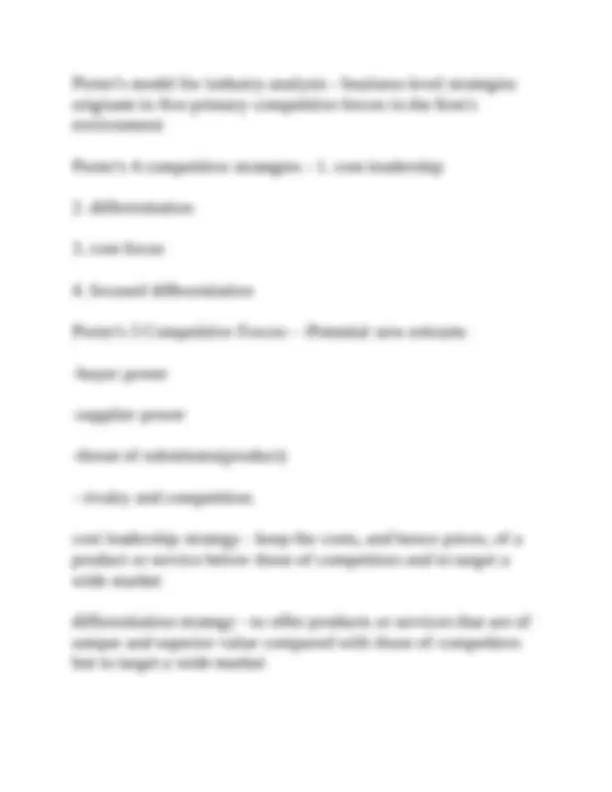



Study with the several resources on Docsity

Earn points by helping other students or get them with a premium plan


Prepare for your exams
Study with the several resources on Docsity

Earn points to download
Earn points by helping other students or get them with a premium plan
Community
Ask the community for help and clear up your study doubts
Discover the best universities in your country according to Docsity users
Free resources
Download our free guides on studying techniques, anxiety management strategies, and thesis advice from Docsity tutors
A comprehensive overview of key concepts related to globalization, international business, and trade. It covers topics such as the benefits and risks of globalization, different types of international businesses, cultural considerations in international management, and trade barriers and agreements. The document also includes questions and answers that can be used for studying and exam preparation.
Typology: Exams
1 / 34

This page cannot be seen from the preview
Don't miss anything!



























Globalization - the trend of the world economy toward becoming a more interdependent system Benefits of Globalization - expands market. increases profit what's the reason for companies expanding to foreign countries.
what're the 4 positive effects of a global economy? - -worldwide market for companies and consumers -increased influx of information -increase in technology improvements -more openness of price negotiation between foreign firms. whatre the 4 negative effects of global economy? - -much publicized job losses in the USA -increased challenges for day-to-day managers -increased numbers of potential threats for data loss -risk of hidden or unanticipated costs what're the two types of businesses worldwide? - -megamergers -minifirms What is a megamerger? - vastly established & successful companies that merge with other companies in order to better future profits. what is a minifirm? - Operating worldwide; small companies can get started more easily and maneuver faster cross cultural awareness - the ability to operate in different cultural settings.
what is true about the ethnocentric viewpoint? - its less attributable to prejudice than it is to ignorance because such managers know more about their home environment than their foreign one. what could ethnocentrism also be known as? - parochialism What is parochialism? - a narrow view in which people see things solely through their own perspective polycentric managers - take the view that native managers in the foreign offices best understand native personnel and practices, and so the home office should leave them alone geocentric managers - accept that there are differences and similarities between home and foreign personnel and practices and that they should use whatever techniques are most effective. 5 measures of why companies expand internationally - -new markets -availability to supplies -low labor costs -access to finance capital -avoidance of tariffs and import quotas
what are a Maquiladoras? - a factory in Mexico run by a foreign company and exporting its products to the country of that company. what're the five ways of expanding internationally. in order from highest risk to lowest risk investment - Highest: -Wholly-owned subsidiaries -joint ventures -licensing and franchising -importing, exporting and countertrading -global outsourcing lowest what is global outsourcing (offshoring)? - using suppliers outside the US to provide labor, goods, or services. What is outsourcing? - obtain (goods or a service) from an outside or foreign supplier. What is reshoring? - Process of moving operations back to company's domestic location Importing - a company buys goods outside the country and resells them domestically
trade protectionism - the use of government regulations to limit the import of goods and services. what're the barriers for international trade? - 1. Tariffs 2.import quotas 3.emargoes and sanction Tariffs - a trade barrier in the form of a customs duty, or tax, levied mainly on imports whatre the two types of tariffs? - 1. revenue tariffs 2.protective tariffs what is a revenue tariffs? - -is designed to simply raise money for the government. EX. a tax on oil imported into the USA Protective Tariff - A tax on imported goods that raises the price of imports so people will buy domestic goods. Import quotas are: - restrict quantity of imports into a country what's the intent of an import quota? - to restrict the availability of foreign products, forcing people to buy domestic products what is dumping? - when a firm sells a product in a foreign country below its domestic price or below its actual cost to produce.
is the US commerce dept for or against dumping? - against, they recently developed an antidumping case against imports for aluminum sheets from China. what is an embargo? - ban on trade with another country Example of embargo - due to north Korea testing missiles trump administrations has advised China to completely cut off oil trades with NK. sanction - the trade prohibition on certain types of products, services, or technology to another country for specific reasons what're sanctions known as? - they're known as partial embargos due to restricting trade in certain areas not everywhere. what're the three principles designed to facilitate international trade? - 1. world trade organization 2.world bank 3.international monetary fund what's the purpose of the world trade organization (WTO) - to monitor and enforce trade agreements. what's the purpose of the world banks - to provide low interest loans to developing countries for improving their well being whats the international monetary fund? (IMF) - designed to assist in smoothing the flow of money between nations.
Culture - Beliefs, customs, and traditions of a specific group of people. low-context culture - shared meanings are primarily derived from written and spoken words high-context culture - people rely heavily on situational cues for meaning when communicating with others Who is Geert Hofstede? - A social psychologist that identified six value dimensions that are influenced and modified by culture Hofstede model of four cultural dimensions - Identifies four dimensions along which national cultures can be placed whatre the four cultural dimensions of the hofstede model - 1.individualism/collectivism
-institutional collectivism what're the 3 lowest rated global dimensions? - -future orientation -performance orientation -humane orientation whatre the 6 different cultural variations? - 1-language 2-interpersonal space 3-communication 4-time orientation 5-religion 6-law and politicial stabilitiy language - a way of communicating to others that differ in culture interpersonal space - how close or far away one should be when communicating with another person. Communication - The imparting or exchanging of information or news with people from other cultures time orientation - the degree to which a society emphasizes short-term or long-term goals Religion - sometimes a deciding factor from investors based on your beliefs. law and political stability - instability, expropriation, corruption, and labor abuses
Consicientiousness - how dependable, responsible, achievement oriented, and persistent someone is. Emotion stability - appropriate emotional control. openness to experience - how intellectual, imaginative, curious, and broadminded someone is. core self-evaluation - Represents a broad personality trait comprising four positive individual traits whatre the 4 traits in core self-evaluation - : (1) self-efficacy, (2) self-esteem, (3) locus of control, (4) emotional stability self-efficacy - One's belief in his or her own ability. Generalized self-efficacy - a person's belief or confidence in his or her capability to cope with and perform in a variety of situations learned helplessness - the debilitating lack of faith in one's ability to control one's environment self-esteem - the extent to which an individual likes, values, and accepts the self locus of control - indicates how much people believe they control their fate through their own efforts.
emotional stability - how relaxed, secure, and unworried one is emotional intelligence - ability to monitor your and others' feelings and to use this information to guide your thinking and actions organizational behavior (OB) - a field of study devoted to better understanding how to manage people at work Values - abstract ideals that guide one's thinking and behavior across all situations attitude - a learned predisposition toward a given object affective component of attitude - A person's feelings or emotions about an object, person, or event. cognitive component of an attitude - beliefs and knowledge one has about a situation behavioral component of an attitude - Also known as intentional component, this refers to how one intends or expects to behave toward a situation cognitive dissonance - to describe the psychological discomfort a person experiences between his or her cognitive attitude and incompatible behavior what is importance relative to dissonance - how important are the elements creating the dissonance?
3- race/ethnicity stereotypes halo effect - in which we form an impression of an individual based on a single trait implicit bias - attitudes or stereotypes that affect our understanding, actions, and decisions in an unconscious manner recency effect - tendency to remember recent information better than earlier information casual attribution - the activity of inferring causes for observed behavior whatre the 2 types of bias - -fundamental attribution bias -self serving bias fundamental attribution bias - Tendency whereby people attribute another person's behavior to his or her personal characteristics rather than to situational factors. self-serving bias - to take personal credit for success but blame failure on external factors self-fulfilling prophecy (pygmalion) - describes the phenomenon in which people's expectations of themselves or others lead them to behave in ways that make those expectations come true. Example of self-fulfilling prophecy (Pygmalion) - a waiter who expects some poorly dressed customers to tip poorly.
whatre the 3 types of attitude managers are particularly interested in? - 1. employee engagement
Ethnocentrism - Belief in the superiority of one's nation or ethnic group. diversity climate - a subcomponent of an organization's overall climate and is defined as the employees' aggregate perceptions about the organization's diversity-related formal structure characteristics and informal values psychological safety - reflects the extent to which people feel free to express their ideas and beliefs without fear of negative consequences. Type A behavior pattern - the ability to accomplish more in less time because they're driven Roles - sets of behaviors that people expect of occupants of a position work-life conflict - When the demands from one's work and other aspects of one's life are negatively affecting one another. Buffers - administrative changes that managers can make to reduce the stressors that lead to employee burnout employee assistance programs - help employees cope with personal stresses and problems hollistic wellness program - focuses on -self-responsibility, -nutritional awareness -relaxation techniques